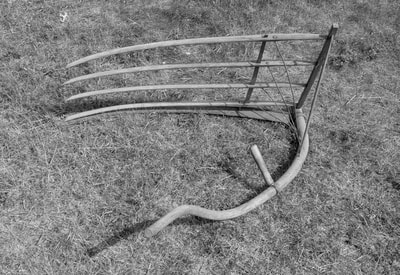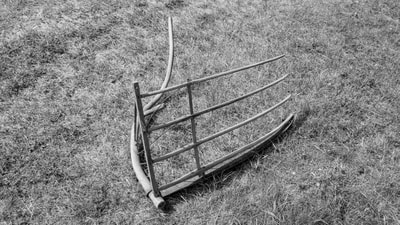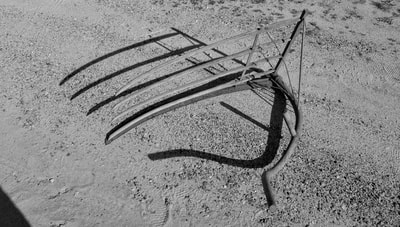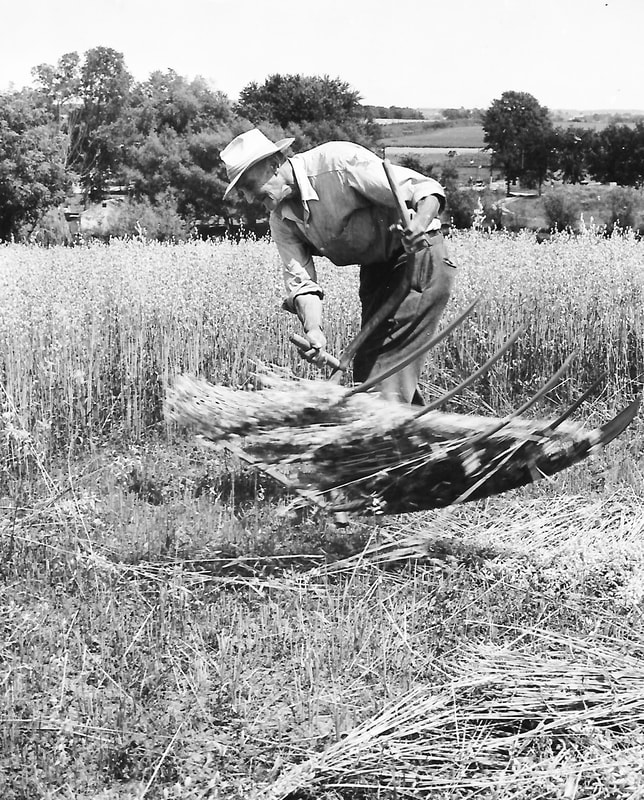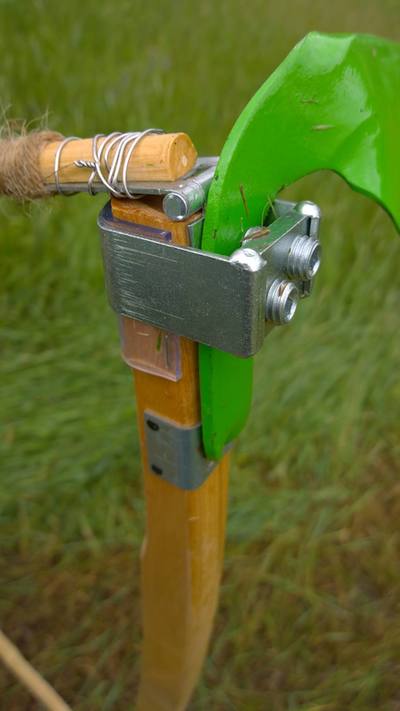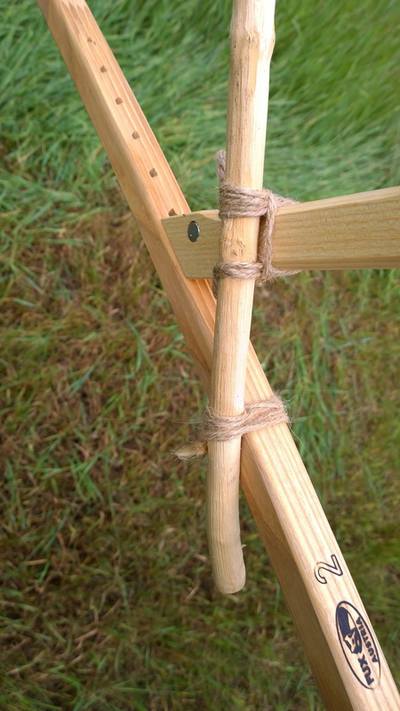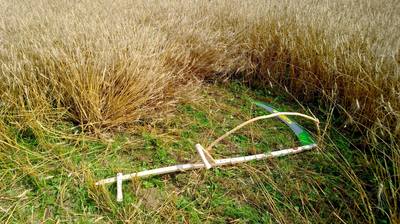Grains are quite easy to mow with a scythe. The tricky thing though is that the stalks can fall every which way as you mow, leaving behind a jumbled pile of straw in your windrow. This jumbled mess is very difficult to gather neatly into sheaves. In order to efficiently thresh the grain, the grain heads need to be all aligned at one end. Over time, various grain cradles where invented to catch and keep the grain stalks in alignment as you mow them, to make it easier to later bundle into neat sheaves for drying and threshing. Here in the USA, many people have seen antique American grain cradle scythes either in historical photos, or on display, and ask if I sell grain cradles. I wish I could, but nobody manufactures these grain cradles anymore. You either have to find a functional antique, or make your own.
Form equals function. The American cradle scythe in the video above has got to be one of the most sophisticated grain harvesting scythes ever invented. The complex curvature and single grip, enables the mower to balance the big scythe, while mowing at a high stubble height, (above the weeds, and slice through, and swoop up the falling stalks of grain, and then the compound curves and long grip give you the leverage to flip and deposit the grain stalks in a neat bundle ready for threshing, and return for the next stroke. All in one fluid, continues figure 8 motion. This was a very specialized and sophisticated scythe! I encourage scythe enthusiast, interested in working with hand harvesting grains, to seek out any of the functional cradle scythes that are still out there, and restore and preserve them, and if possible, gently put them back to work. You can often find them for sale on Craigslist and eBay, though because of their size and fragility, you most likely have to live within driving distance and pick them up.
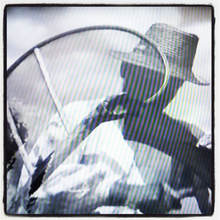
In Europe there are mainly two types of grain cradles: rake and bow cradles. Rakes have fingers that catch and rake aside the cut grain stalks, usually away from the standing grain. Bow cradles are used to catch the falling grain stalks and are usually used to press them up against the base of the standing grain on the left. The standing grain is used as a stop, to align and compress the cut stalks together, to make it easier to gather into sheaves. So with bow cradles your scythe strokes are towards the standing uncut stems, not away from them, as in cutting hay. I compiled a playlist on YouTube, of many different types of rake and bow cradles in action, for ideas on how to harvest your own grains. Here is a link to a video that shows what I consider to be a more sophisticated type of bow cradle, also pictured at left. This type of bow cradle can also be seen in action in this amazingly thorough documentary of how grains were traditionally harvested still in 1966, in the Hunsrück area of Germany.
A DIY Homemade Grain Cradle for the European Scythe
If the all the above info seems rather daunting to you, no worries; some members of the British Scythe Association have learned from their local tradition of reed harvesting, to make a simple bow cradle, called a "boyle and a pricker", that works quite well. Below is a brief video of one of my own experiments with it. I found mowing into the standing grain worked better for me, and I didn't notice any benefit from the "pricker" at all. Maybe with taller grains, I would have, or if trying to mow away from the standing grain. But at this point in my experience, I think bow cradles work best when pressing the cut stems into the base of the standing wheat to your left.
For more info on how to harvest grains see my articles in my blog, especially this one https://onescytherevolution.com/blog/harvesting-grains-with-a-scythe and this one onescytherevolution.com/blog/grain-harvest-workshopexperiment-2009-oats
